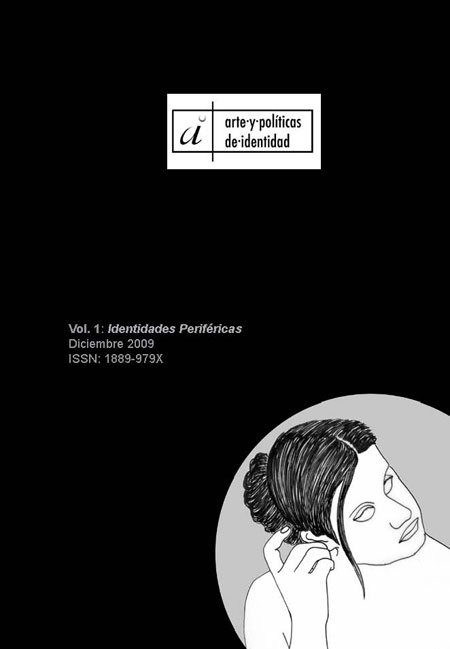La retórica ambivalente de la performance drag king: estereotipos y parodia de la masculinidad en un contexto anglosajón
Abstract
Most studies on the drag king phenomenon agree on signaling the subversive component of drag kings’ performances of masculinity simply because they dislodge the notion of masculinity from the domain of biological men, thus disrupting the “sex/gender binary” traditionally in force in most spheres of academic research, culture and society. Although such a gender disruption may be defined as subversive per se, my point of departure here is that drag kings’ acts cannot be univocally read as ubversive, for they can also be seen as the reinforcement of hegemonic masculinity. This may be so because of the inherent ideological instability and ambivalence of many of the strategies they use, such as stereotypes, camp aesthetics, drag performance or parody. Moreover, the present essay puts forward that the latter interpretation mainly originates when the queer codes and signs through which drag kings’ masculinities are enacted fail to be read as such. Then, in order to fully assess whether drag kings’ performances are politically effective or not, a careful consideration will be given not only to the content but also to the context in which these queer performances emerge and to a brief theoretical discussion of the abovementioned strategies.Downloads
-
Abstract1607
-
PDF (Español (España))1543
References
Butler, J. (1990). Gender Trouble. Feminism and the Subversion of Iden-tity. London, New York: Routledge.
-----------. (1993). Bodies that Matter. On the Discursive Limits of ‘Sex’. London, New York: Routledge.
Connell, R. W. (1995). Masculinities. Sydney: Allen and Unwin.
De Lauretis, T. (1994). The Practice of Love. Lesbian Sexuality and Per-verse Desire. Bloominghton and Indianapolis: Indiana U.P.
Dyer, R. (1997). White. London, New York: Routledge.
Fouz-Hernández, S. (2005). “Re-inventing the Phallus: Madonna and Female Masculinity”. En Actas del 28th Congreso de AEDEAN, Universi-dad de Valencia.http://www.liv.ac.uk/music/downloads/FJI%20research/AEDEAN_28_Proceedings.pdf
Gerestant, MilDred. (2002). D.R.E.D.: “Daring Reality Every Day”. The Path of a Multi-Spirited Haitian-American, Gender-Illusionist Wo-Man! –And Then Some! USA.
Halberstam, J. (1998). Female Masculinity. Durham, London: Duke UP.
----------------. (2005). In a Queer Time and Place. Transgender Bodies, Subcultural Lives. New York, London: New York UP.
Hall, S. (1997). Representation. Cultural Representations and Signifying Practices. London: The Open U.
Muñoz, E. J. (1999). Disidentifications. Queers of Color and the Perfor-mance of Politics. Minneapolis: U. of Minnesota P.
Neal, S. (1993). “Masculinity as Spectacle: Reflections on men and main-stream cinema”. En Steven Cohan y Ina Rae Hark (eds). Screening the Male: Exploring Masculinities in Hollywood Cinema (pp.9-20). London, New York: Routledge.
Neal, M. A. (2005). New Black Man. London, New York: Routledge.
Newton, E. (1979). Mother Camp. Female Impersonators in America.Chicago and London: The U. of Chicago P.
Robertson, W. P. (2002). “Mae West’s Maids: Race, ‘Authenticity’, and the Discourse of Camp”. En H. Jenkins, T. McPherson, y J. Shattuc (eds.). Hop on Pop. The Politics and the Pleasures of Popular Culture(pp. 287-299). Durham and London: Duke UP.
Sontag, S. (1966). Against Interpretation and Other Essays. New York: Dell.Troka, Donna, Kathleen Lebesco and Jean Noble (eds.). (2002). The Drag King Anthology. New York, London, Oxford: The Haworth Press.
Volcano, D. and Halberstam, J. (1999). The Drag King Book. London: Serpent’s Tail.
Works published in this journal are subject to the following terms:
- The Service of Publications from the University of Murcia (publishing house) keeps the published works’ copyrights, and favors and allows the reuse of these works under the license indicated in point 2.
- Works are published in the journal’s online edition under the license Creative Commons Reconocimiento-NoComercial-SinObraDerivada 3.0 España(texto legal). They can be copied, used, disseminated, transmitted and publicly exhibited, as long as: i) the author and original source of publication are cited (journal, publishing house and work’s URL); ii) they are not used for commercial purposes; iii) the existence and specifications of this license are mentioned.
3. Conditions for auto-file. It is allowed and encouraged that authors share electronically their pre-print version (the pre-reviewed version) and /or post-print version (the reviewed and accepted version) of their Works before the publication, since it promotes its circulation and dissemination. RoMEO color: green.










